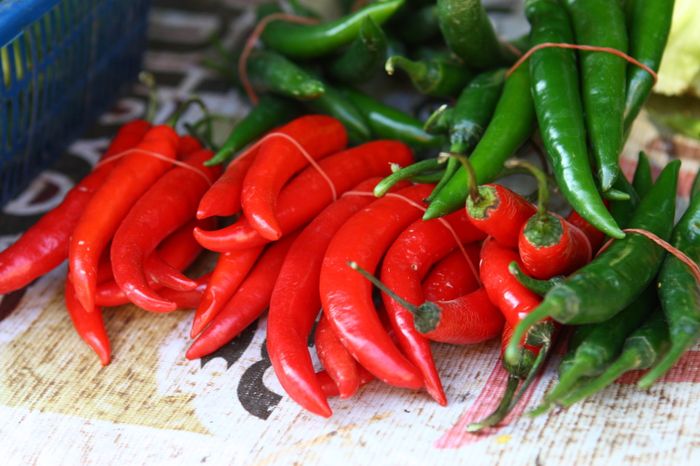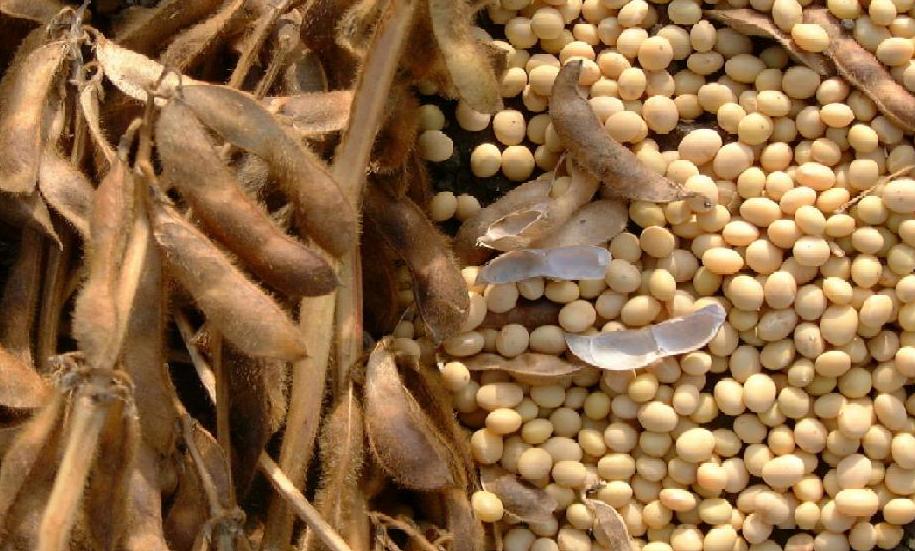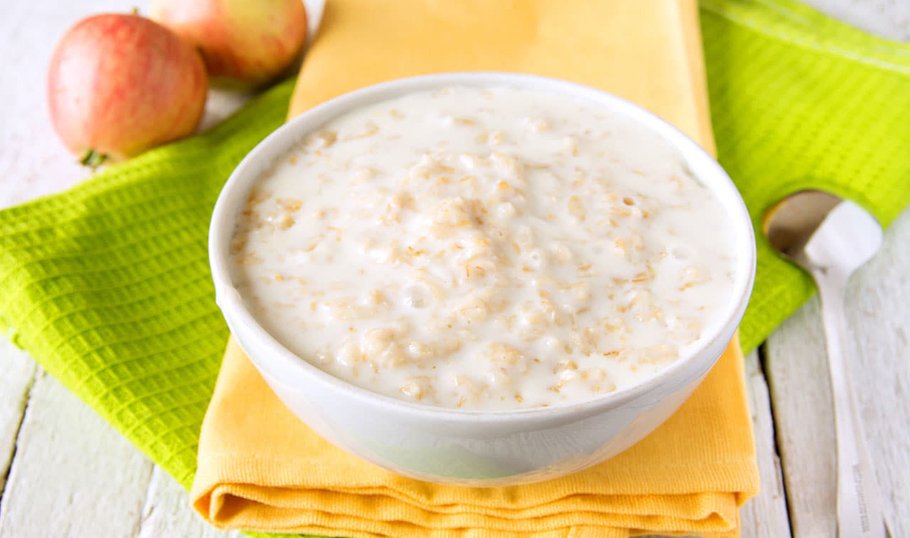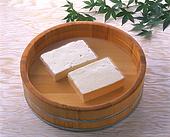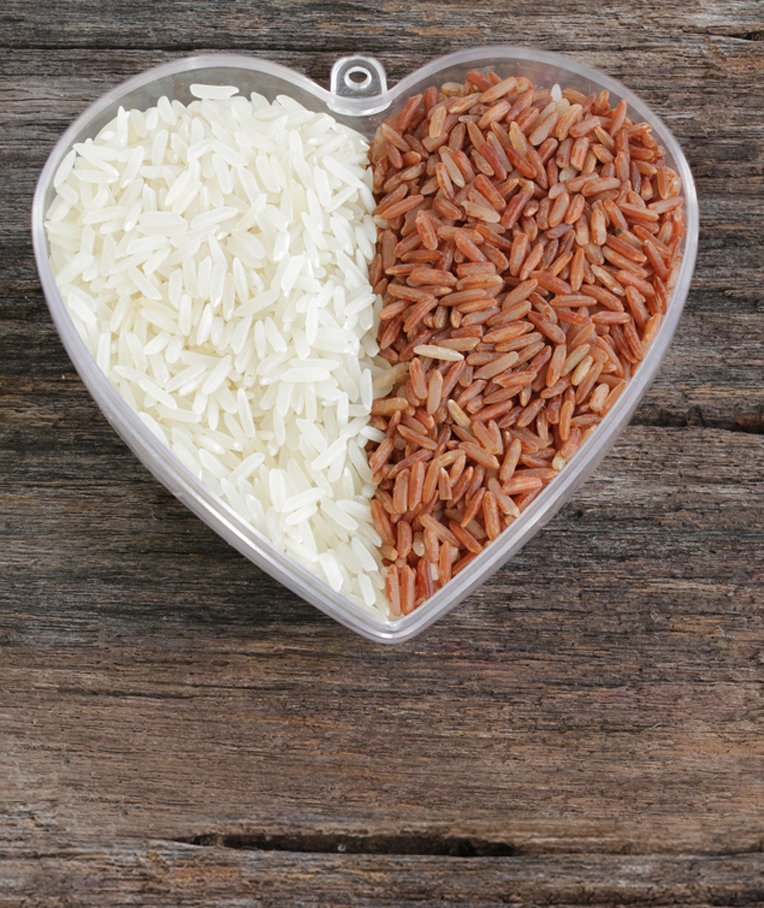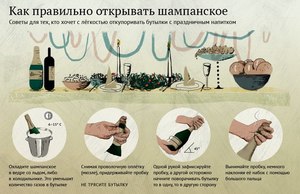A component of soy products. What is soy, health benefits and harms
Some foods contain soy. Considering soybeans to be more beneficial than meat, many people are trying to replace their usual food for us, without thinking about the question - is soya good for our body?
Soybean, this is one of the oldest annual plants, which belongs to the legume family. It is also called the "miracle plant." Soybeans were first grown in China. Then soybeans moved to Korea, to Japan, and this culture came to Europe in 1740. The French were the first to eat it.
After researching soybeans by the Americans in 1804, a mass and targeted cultivation of this plant began. The expedition of V. Poyarkov in 1643 - 1646. visited the Sea of \u200b\u200bOkhotsk, where they saw soybean crops from the Manchu-Tungus people. But the Russian people did not show much interest in this culture. Only after the World Exhibition was held in Vienna in 1873, soybeans became interesting for practitioners.
Soybean composition
Soybeans are rich in substances that are useful for human life. They are not only very nutritious, but also healing. For example, soy contains isoflavonoids that prevent the formation and development of certain forms of cancer. And genestein stops the disease of the cardiovascular system in the early stages. Also, soy is rich in lecithin, choline and other substances that play a role in the treatment of many serious diseases, fiber, vitamins of the group B, C and E, omega - 3. The composition of soy contains a whole set of amino acids, which means that its usefulness is ahead of pork and beef.
The benefits of soy
Soy is rich in vegetable protein, which is more in it than in eggs, fish and meat. Soy protein is very important for the proper functioning of the body. Plant proteins are absorbed by 90%. Soy products contain substances that positively affect the balance of microelements in the body. Lecithin is the most beneficial in soy. It is very important for the brain, for its work. Lecithin helps cells recover, monitors blood cholesterol, and fights Parkinson’s disease, atherosclerosis, and other human diseases. Also, the presence of lecithin slows down aging, so soy is very famous among the elderly.
Soya lecithin helps to generate energy, nourishes a growing body, and this is especially important in childhood.
The composition of soybeans includes the entire set of amino acids, which means that its usefulness is ahead of pork and beef.

Recently, Americans have increasingly begun to add soy to their diet. Studies have shown that eating soy products has a positive effect on human health. You need to know that only soy in its pure form is beneficial. In no way does this apply to products in which soy is only an additive.
American researchers are unanimous in that if you include from 25 to 50 grams of soy protein in the diet during the day, you can reduce the level of "bad cholesterol." And, as you know, such cholesterol clogs blood vessels, which leads to heart disease.
Positive dynamics in the use of soybeans were noticed in women during menopause. With age, the process of estrogen production in women slows down, and soy can make up for their lack.
Soybean harm
In documentary studies conducted with the participation of 3,734 elderly men, it was found that those who 50% of their lives ate soy had a higher risk of Alzheimer's disease.
Other studies by Asian researchers have shown that men who use soy in their diets twice a week are more prone to mental disturbance than those who never eat it at all.
Some people think that eating soy leads to infertility and obesity.
Also, soy is useful to people of all ages. The isoflavones present in soybeans are very similar in composition to the female hormone estrogen, and frequent consumption of soy can disrupt the balance of hormones in the body. And this can be dangerous for women who are preparing for conception, are planning a pregnancy, but especially for pregnant women.
Scientists - pediatricians at Cornell University are confident that a deficiency of thyroid hormones can occur precisely from the frequent use of soy products. Overweight appears, constipation, overwork torment. All this leads to general apathy.
The presence of soy, according to some researchers, leads to brain volume and weight loss.
As numerous studies have shown, soybeans contain both nutrients that are beneficial to the body and anti-nutrients that can harm health. Anticoagulant properties, pronounced in raw soy, neutralize the vitamin K group, which provides a level of coagulation, and also participates in the process of calcium absorption. Unlimited use of soy can lead to mineral deficiency, pancreatic hypertrophy.
Soybeans contain lectins that stick together blood cells, which inhibits their growth. And this is fraught with consequences for the body.

Output
Until today, in the world of science, they can not come to a consensus on the issue of the benefits and harms of soybeans.
If soy is not included in the category of a genetically modified product, but grown in a natural way, then its beneficial properties significantly exceed the harmful ones.
From the foregoing, the conclusion suggests itself that whether or not to eat soy products should be decided by each person independently, regardless of the opinion of the other.
Soya, Soya Products - Video
Today it is difficult to find a person who would not hear anything about soy.
In Russia, soybean has been massively cultivated for about 80 years, and during this time the population has developed an extremely controversial image of this culture.
On the one hand, it is considered the food of the poor. The older generation still remembers the notorious soy sweets. At the end of the twentieth century, the motto of consumers sounded quite loudly: "Less soy in sausage!" Gradually, an opinion was formed about soybeans as a low-edible substitute, a low-quality, and sometimes harmful substitute for natural products, which is uncontrollably added to food by greedy owners of food-processing companies in pursuit of profit. From television screens and newspaper pages, messages are regularly heard about the dangers of transgenic soy to the health of present and future generations. And now, which year, with great doubt and apprehension, we look at foods whose labels indicate that they contain soy additives.
On the other hand, throughout the world, soy is recognized as the best protein food for animals and poultry. It is also willingly and actively used in the meat, dairy, oil and fat, confectionery, and baking industries, which also contributes to the further growth of its production and processing in our country and in the world.
Soybean is one of the oldest cultivated plants, and was first domesticated in northeast China. She is a distant relative and, along with, and others, belongs to leguminous plants. The word "soy" itself is borrowed from European languages \u200b\u200bin which it sounds like soy / soya / soja. Chinese linguists believe that the modern name "soya" dates back to the Chinese word "shu" or "su" - bean, as in the II-I millennia BC in China they called soy.
In the decoding of the Chinese literary critic and historian T.S. Hu elements of the left side of the character "shu" mean the following: a horizontal line symbolizes the earth; vertical upper and lower parts mean, respectively, the stem with a side shoot and root; three strokes around the root represent nodules. According to Hu, the images of the character “shu” can be traced back to the 11th century BC. and illustrate the observation and level of knowledge of the ancient Chinese.
Later, already at the beginning of our era, the pictographic image of the concept of “soya” based on the morphological characteristics of the plant changed to the image of the functional (food) significance of this plant.
Apparently, the ancient man's choice of certain types of legumes, in particular soybeans, as food sources was determined, first of all, by their nutritional merits, which was reflected in Chinese hieroglyphics. The original meaning of the hieroglyphs “yes dou” in ancient China meant meat seasoned with soy sauce and was depicted as a sacrificial bowl. Later this character corresponded only to soy sauce, and then to the plant itself.
The modern meaning of Chinese characters has been simplified to the morphological features of soybean seeds. So the hieroglyph "yes dow" in the last few centuries means a big bean.
Soybean cultivation is mentioned in the earliest Chinese literature, dating back to the period 3-4 thousand years BC. According to legend, the founder of China, Emperor Shen-Nong, who lived about 4,300 years ago, taught his people to sow five crops: rice, wheat, chumiza, millet and soy. Shortly before the advent of our era, soybeans came to the Japanese islands. But only two millennia later, she became known outside of Asia.
Soya first entered Europe in 1740, however, it began to be cultivated there only in 1885. In 1898, a large number of soybean varieties from Asia and Europe were brought to the United States, which provoked the rapid development of industrial production of this crop. In the early 30s of the XX century, the area under soybeans in this country exceeded 1 million hectares. Since then, the United States has been a leader in the world in this culture.
However, the priority in soybean research belongs to Russian scientists and travelers. The first domestic mentions of soybeans belong to the expedition of V. Poyarkov to the Sea of \u200b\u200bOkhotsk in 1643-1646, which met soybean crops along the middle reaches of the Amur River among the local Manchu-Tungus population. The next domestic archival mention of this culture dates back to 1741. However, practical interest in this culture in Russia appeared only after the World Exhibition in Vienna in 1873, where more than 20 soy varieties from Asia and Africa were exhibited. The first experimental crops in Russia were made in 1877 on the lands of the Tauride and Kherson provinces. The mass introduction and distribution of soybeans in Russia, primarily in the Far East and the North Caucasus, began in 1924-1927.
In 2005, soybean in Russia occupied 720 thousand ha, and with an average yield of 8.5 c / ha, a gross grain harvest of about 600 thousand tons was obtained. At the same time, the real needs of the country for soy and its processed products are 7-10 times higher, and they are compelled to be compensated by soy imports from the USA and Brazil. Moreover, in Russia there is a real possibility of increasing the gross production of this crop, which can be achieved both by cultivating more productive soybean varieties and expanding its sown area.
At present, soybeans are the most important oilseed crop of world agriculture and a recognized leader among cultivated legumes. The total area occupied by soybeans in the world in 2005 amounted to 91.3 million hectares, while the gross harvest of soybean grain reached almost 210 million tons. The average soybean yield in the world in 2005 was 23 kg / ha (for comparison, the total area in the world under winter and spring wheat in 2005 amounted to 215.6 million ha with an average yield of 29.1 kg / ha). But this is not the limit of the biological capabilities of soy. The record crop yield of this crop in the southern subtropical states of the United States reached 74 kg / ha.
Compared to the main co-producing states, Russia is a northern and cold country. Its southern borders approximately correspond to the northern borders of the USA. At the same time, two-thirds of all areas under soybeans are located in the Amur Region, Khabarovsk and Primorsky Territories in the zone of traditional, but risky, and by the standards of American farmers almost impossible for soybean farming. This largely determines the low average domestic productivity of soy. At the same time, the southern regions of Russia have long been successfully receiving high, not inferior to the American, soybean crops. So, the record soybean yield recorded in the Krasnodar Territory in 2004 on an area of \u200b\u200b114 ha amounted to 46.3 c / ha, and in experimental plots of 2-3 ha reached 50-55 c / ha.
Research is being conducted and quite successful attempts are being made to grow soybeans in the Central and Volga Federal Districts. It must be emphasized that in similar climatic conditions, even Canadian farmers do not risk growing soybeans.
Currently, there is practically no country that does not use soy or its processed products, and its cultivation zone covers the strip from Sweden and Canada in the northern hemisphere to the southern provinces of Argentina in the southern hemisphere of the Earth.
Soybean has acquired such global significance due to its unique biochemical composition associated with this multifunctional use and high profitability of industrial production.
The most common use of soy is the production of vegetable oil and its processed products. The oil content in soybean seeds ranges from 16 to 27%. Soybean oil is characterized by high biological activity due to the increased amount of linolenic acid and the associated increased F-vitamin activity. Of the total world production of vegetable oils, soybean accounts for more than 30%.
Among all cultivated crops, soy is one of the highest protein in the world. Its seeds accumulate 37-45, and in some varieties up to 50% of high-quality vegetable protein, which is 10-12 times cheaper than the animal. In terms of usefulness, soy protein is one of the best vegetable proteins, and in terms of the content of essential amino acids in a protein, it is close to proteins of animal origin, in particular, to egg protein.
A characteristic feature of soy is a low carbohydrate content. Due to this, it is recommended for patients with diabetes. According to the conclusion of the Nutrition Institute of the Russian Academy of Medical Sciences, soy products provide a pronounced hypoglycemic effect in patients against the background of cancellation or reduction of the dose of the usual antidiabetic drugs, including insulin.
For several millennia, soybean has been used as one of the staple foods in East Asian countries. From it, milk and curd cheeses Doufu (tofu), soy sauces, soy meat with various flavors of taste, specific products of tempe and miso fermentation are still being produced from it at home and in factory conditions. In some parts of China, there was even a tradition: a girl, getting married, should have known about 100.
In recent years, in many countries of Europe and both Americas, as well as in Russia, there has been a tendency to increase the use of soybean products in the food industry, including in the system of healthy and balanced nutrition, and especially in vegetarian cuisine. The presence in the soybean grain of a number of specific biologically active components (isoflavones, oligosaccharides, saponins), as well as phytates and fiber, allow the use of some soy products in therapeutic and preventive nutrition.
Soy concentrates all over the world have been used in production for many decades, without worsening, but even vice versa, emphasizing high taste.
To include soy in a daily diet, it is not necessary to change food habits drastically. Due to the fact that various analog products are produced on the basis of soy, it can be included in the usual diet, replacing part of it, or meat.
Soya is a very controversial product, many are afraid of it, but justify why they can’t, but someone considers it a storehouse of benefits, because Now they are actively promoting it to us, and everyone has heard about the magic properties of soybeans known hundreds of years ago in Asia and China. Those who switch to vegetarianism through inexperience and from advertising often believe that soy products should now become the basis of their diet in order to provide themselves with protein and the rest - but this is only an advertising myth, vegetarians can easily have a balanced diet without soy! Someone is switching to soy because of cheapness, although we still have few useful soy products, or they are very expensive. Always remember that health costs more than a small saving on food, and if you devote a little time and effort to the issue of nutrition, anyone can choose an affordable and balanced diet without soy or with useful soy products, even a vegan, however, it will not fast food semi-finished and fast food, you will have to learn how to cook at home, and not throw in yourself something from the package, filled with water for a couple of minutes (saving time on the culture of cooking, we almost always lose health later)! Nevertheless, there really are useful options for soy in moderate consumption, let's get acquainted with them.
And so, what I learned from the information I studied and research on soy and the composition of soy products:
- Most of the studies that confirmed the harm of soybeans were conducted using GMO soybeans. The harm of soybeans is justified and confirmed with daily use and abuse, with single small quantities - research data vary widely and apparently depend on the initial supply of human health and the accompanying diet. The harm of soybeans (in the research it is about soy without fermentation and soy isolate) for pregnant women and excessive use in baby food, most studies confirm.
- The peoples of Asia used soy for about 1000 years in their diet (according to other sources about 5000 years, but there is no data for food or not and in what form). Here it is worth again emphasizing that they used it before not GMOs and in the form of products from beans, which were necessarily subjected to natural fermentation! There is no evidence that in Asia they ate soy without preparing it using fermentation methods (+ heat treatment for some recipes), but there is research on the dangers of consuming whole soy without fermentation. What is fermentation? In fact, it would be more correct to say fermentation, because for soybean processing, we often use a symbiosis of bacteria from wheat or sourdough, and not just its internal reserves of enzymes (during germination). The essence of the process is that special bacteria and enzymes prepare the product for a simpler and more accessible form of assimilation for our body, as well as destroy the harmful protective substances of the bean. What gives soy fermentation? The process of prolonged fermentation greatly reduces the effects of trypsin, hemmagglutinin and phytic acid inhibitors and makes soybeans edible and healthy (i.e., removes those factors in soy that are likely to contribute to pancreatitis, chronic malabsorption of certain vitamins and minerals, and how consequence of hypothyroidism, goiter, vitamin deficiency, especially for group B, zinc, magnesium, calcium, infertility and early childhood development problems).
- The relationship between the increased likelihood of a lack of magnesium, zinc, copper, calcium and iron in people who regularly consume soy has been proved. phytic acid (and in soy it is much more than in any other whole-grain cereals and beans, and it does not decrease enough when soaked and heat treated) blocks the body's ability to absorb the above minerals. It removes the effect of phytic acid on the body by processing soybeans through prolonged fermentation or eating soy products in combination with meat or fish (to a lesser extent). In fact, if we take Japan, China, Indonesia - countries where soy is regularly consumed, then we will see two patterns: 1. There are few vegans, most people eat soy and fish or meat on a regular basis. 2. Most local soybean uses are fermented soybean (miso, tempe, nato, tofu, etc.). But products from unfermented soybean (soy milk, soy flour, soybean oil) and soy isolate are popular in the USA, Canada and it is there that in the recommendations to vegans we can see a diet consisting almost entirely on soy and recommendations to use vitamins or supplements for those substances that probably due to an excess of whole soybeans poorly absorbed. It is possible that the eternal debate about the dangers of veganism, just in terms of iron, zinc and magnesium deficiency, is actually associated with the frequent consumption of soy by many modern vegans, which led to health problems. Conclusion: if you are a vegan, then you should limit the use of products from soybeans without fermentation, i.e. permissible tempeh (only cooked by fermentation), misso, natto and soy sauce (only cooked by fermentation), which again should only be natural long-term fermentation! Do not make soy products the basis of their nutrition - moderation is important and a variety of diets.
- In the Russian Federation and the CIS countries, GMO soybeans are not currently grown, so all the tales about soybeans, that all GMOs on the Internet are related to other countries (USA, Canada, Mexico). Most soy products in the Russian Federation have certificates and marks about GMOs, so you can watch and choose.
- Misso paste from soy has the ability to cleanse the body during radiation exposure. But it is also worth remembering that soybeans can absorb pollution from the soil on which they grow, so when buying soybeans, you should pay attention to which zone it is grown in or for bio-certificates.
- It is advisable to exclude soy meat, soy flour, soy milk and soybean oil for pregnant women and children under 2 years old!
- Soy is a sufficient allergen (with caution for the first time if you are severely allergic).
- The harm of soy products made on the basis of soy protein (soy protein) and soy protein isolate has a lot of evidence. Why? First, soy protein and isolate are not a natural product, but are obtained using a variety of chemicals in production technology. Secondly, as a result, soy protein contains carbohydrates that our body cannot digest, and again, all the horror stories that “soy clogs the intestines” are directly related to soy protein and all soy products and additives based on it, and not to soya itself! Thirdly, soy protein and isolate are often made from GMO soybeans often because our country usually imports it (in the USA, soybean GMOs often). Those who believe that only vegans who use soy are faced with this problem and the harm of soy protein are deeply mistaken, because soy protein is now used in almost all industries for all everyday food products and control purchases confirm this. You are sure to meet soy protein or isolate every day when you buy and eat: bread, cookies, waffles, gingerbread cookies, bagels, ice cream, durum wheat pasta, many sweets and chocolates, most baby food, diet foods, sweet curds, some dairy products, many meat products (here the least harm, because in combination with meat), convenience foods, some ketchups, sauces, etc. Add soy protein there to: increase shelf life, increase the nutritional value of the product in a cheap way, improve the appearance th species and external characteristics. In vegan stores, most often you will find soy isolate in milk substitutes: soy milk (not all imported, whole Russian beans), sour cream, some vegan mayonnaise (by the way, the most delicious without it), cheese soya paste, again can be added without indication in the composition to cookies and sweets (applies only to mass production and especially the question is here the goods of Indian stores).
- Soy dishes do not taste good in inept hands. I know that talented cooks with the help of natural spices can turn the soy base into whatever they want and it will become a really tasty masterpiece. I also know that in order to make soya delicious in factory production, they often use a lot of different additives, flavor enhancers, flavors, dyes, so learn to cook yourself or go to cozy vegan cafes with skilled chefs, which are becoming more and more.
Conclusions for yourself:
- Refused from shop products where soy isolate can be added (especially without composition): bakery products of mass production, cookies, waffles, bagels and gingerbread cookies, store bread, chocolate candies for shops, semi-finished products of mass production (such as pizza base) . “For” rejection of these products can also be considered: the presence in them of trans fats, vegetable fats of unknown quality, a large amount of different E (not the most useful), preservatives, a large amount of sugar or chemical sweeteners. origin, a large amount of starch and the basis of highly refined products. For the same reason, you should refuse to eat in network cafes, where they are already delivering half-prepared ones (for example, chocolate, coffee house, mu-mu, rake, because even salads contain at least citric acid, and sometimes other preservatives).
- I don’t introduce into my diet and exclude products based on soy protein and soy protein isolate, because most of the hype is associated with the use of this relatively recently obtained by man soy-based component: soya paste, vegan cheeses based on soya protein (there are excellent vegan cheeses without soya isolate), vegan soya mayonnaises (there are vegan mayonnaise without soya) and sour cream, soya cream and soy milk powder - exclude. There are many vegan recipes based on nuts and seeds, which are much tastier and healthier, though more expensive.
- I exclude soy products without processing in the form of fermentation / fermentation, such as: soy flour, soybean oil, soya "meat".I draw attention to the method of production of various soy products and choose with natural fermentation (ferments, bacteria, mushrooms):
- Soy milk - an ambiguous product, because There are different variations of its preparation, both with and without bean fermentation, but fermentation in soy milk will still be minimal (I don’t know the manufacturers who make soy drink with fermentation, what we sell do according to TU just with heat treatment). At the moment I don’t use it and I don’t see the point of starting to introduce it into the diet, besides, it’s an amateur taste, and if you need a milk substitute, then there are more interesting alternatives, for example, poppy, sesame or almond milk. At the same time, I’m not completely avoiding it; I can quite afford to sometimes drink cappuccino in soy milk or eat soy milk pastries in a cafe, but if I have a choice, I’ll choose not soy. By the way, interesting information on soy milk - in other countries it is customary to call it a soy drink, not milk. In China and Japan, Germany, under the term “soya drink” you get exactly what we call soya milk, but under the term “soya milk” or “soya cream” you get a mixture based on soya and dried cow or goat milk \\ It seems to me that it is more correct to call “soya drink”, why all the time get attached to comparing with animal products? Also pay attention to the composition of soy milk in tetrapacks - sometimes there are additionally not the most useful components there. Bottom line: soy milk is limited, I don’t buy it on purpose, but I don’t avoid it at a cafe or a guest.
- how to find out which is natural and which is not). There is natural fermentation (3-12 months of fermentation on a sourdough) - I leave it. And there is chemical fast fermentation - I exclude it as a harmful product.
- Tempe - a well-fermented product (without top husk) from Indonesian cuisine, tasty and satisfying, but rarely on the go, in Moscow, the guys from the Moss cafe will arbitrarily.
- Misso- soya misso (AKAMISO - red miso) natural should be made from soybeans and salt by natural long-term fermentation (from 5 days to 1 year) due to the koji-kin mushroom. There is a mixed misso (AWASEMISO) - made from a combination of rice, barley and soy. The Food is very suitable, but I am not a strong miso lover to taste. If you love, then eat and do not worry, a healthy product.
- Tofu- ordinary tofu (hard, soft, linen, bean curd), which has a neutral taste and which we can easily buy, is obtained by quickly curdling with magnesium chloride, calcium sulfate or citric acid (traditionally this was a longer process with sea water and citrus juice, which ensured complete fermentation). Modern fast chemical curdling is not enough to completely neutralize the effects of phytic acid, trypsin and hemmagglutinin - therefore, tofu can be safely consumed by healthy people, but it may be worthwhile to limit the number of children, pregnant and lactating, people with metabolic and thyroid diseases, osteoporosis. Is there "Smelly tofu"or doufu, which is used in China, Malaysia and Taiwan (earlier and in other Asian countries), they usually talk about it, talking about the magical benefits of tofu that came from ancient China, and not about modern tofu! We haven’t seen him on sale at our place (but they say the smell is such that an unaccustomed European in life will not eat of his own free will). “Smelly tofu” has a sharp, not too pleasant smell - it is produced using prolonged fermentation with leaven (that is, it is referred to as completely useful).
- Natto - A special variety of well-fermented (due to hay sticks during the day) soybeans. I didn’t see it on sale in the Russian Federation.
- Soya lyceum- obtained from refined soybean oil or soybean flour. It’s much better not to eat. It is better if in the products of sunflower lycetin, but this is rarely seen, soy is more often added, especially to chocolate.
- Soya "meat", soya sausage - made from nonfat soy flour and water, sometimes from soy protein or isolate. For myself, I refer to unprofitable types of soy products and exclude it. I see it as useful only in terms of helping people to abandon old eating habits and soothe their brain (again, help or psychological self-deception?), And the minus is that during the “calm the mind” or satisfy the taste curiosity you can gain taste dependence.
- Soya Asparagus”- produce
- Soybean seedlings - soybeans (without GMOs) sprout from insignificant whitish sprouts to 4cm green sprouts (germination process is a process of natural fermentation). The most common mistake of Russian people is that they try to eat a whole sprouted bean, but this can not be done! It is necessary to remove the cotyledons (a lot of controversial substances and phytic acid remain in them) and use only the seedlings themselves (a sprout grown from a bean). Optimal complement with any sauce from Chinese or Japanese, Korean cuisines. The second option is the heat treatment of the sprouts. Germination and consumption of the sprouts themselves is by far the most affordable option, as other options for healthy soybeans are expensive and difficult to buy from us.
- Moderation in the consumption of fermented soy products. Well, moderation is important in everything, even in the very useful.
It is very sad that in the pursuit of fashion, cheapness, new taste and instant food, people “sit down” on those soybean options that pose a clear danger to health, and the trend of daily and large consumption aggravates the situation. Around us there are many more worthy products than soy protein, which are able to satisfy the needs of people with any kind of food, including strict vegans and athletes. If you have a deficiency of calcium, magnesium, zinc, iron, B vitamins, hemoglobin, unstable metabolism, PMS, infertility, osteoporosis, bad teeth, depression, elevated platelets, varicose veins, vision diseases, poor memory, thyroid disease , pancreatitis - remove soy from the diet (soya supplements, soya sports nutrition, tofu, soya flour, soya meat and analogues, soya asparagus, soya butter, shop pastry and bread with soya additives). Recently, a lot of pregnant and lactating women use soy and abuse it, which negatively affects the baby.
Currently, a product such as soy is found in many products that are on store shelves - these are dumplings, milk and dairy products in general, sausages and meat products in general, in cheeses and other products. Soy is used simply as a substitute for meat - it is cheaper. But products from the garden will not contain soda - here they are much more useful than store ones!
Soybean soma is not a harmful product in itself, which can have a negative effect on the human body. Yes, it is, if not for one thing. Currently, soybean is the culture that is most genetically modified, and since the harmlessness of GMO products is not sufficiently proven (I believe that the situation is just the opposite), I also prefer to avoid products containing soy.
Such products include, first of all, all substitutes for meat products for vegetarians, since the meat taste is achieved just due to soy vegetable protein, soybean oil and soy flour, which are used in various bakery pasta, as well as soy is used to make sauces and pastries . Soy protein and soybean oil are added to sausages to reduce their cost.
The entire list of products to which soy is added exceeds five hundred names, therefore, when buying something in a store, pay attention to the label where the composition is written in small print and try to decipher it correctly (for example, vegetable protein or a natural substitute for animal protein is soy).
And who said that soy is harmful to the human body. On the contrary, soy contains up to 50 percent of vegetable protein, potassium, calcium iron and polyunsaturated fatty acids. That is why soy is widely used as a substitute for meat in so many products. As a rule, the soybean content is indicated on the package.
I do not understand, what the harm soy?
However, if you do not want to eat, then remember that soy is found in foods such as cheese, sausage, sausages, ham, etc.
Soy is found in milk and dairy products.
Naturally, soybeans themselves.
My sister and her husband, when they go to the store, spend a lot of time there, carefully read the composition. Moreover, they have a small child, and soy is harmful to children, therefore, I understand them. Moreover, I read that constant consumption of soy leads to rapid aging. And it is contained in peas, they are added to minced meat, to sausages, to cheese and even to milk.
Soy is primarily found in soy, that is, in soybeans. They are also sold in the form of canned food, for example. I also saw packets of dried soya slices. You take them, soak them and fry them.
In addition, soy is added to meat products to increase their nutritional value. Soy contains 30-50% protein of plant origin and is already only valuable for nutrition.
If this question stood 30 years ago, I would say that soy must be eaten necessarily. This is a very valuable food product, a substitute for meat. Soy contains proteins, fats, carbohydrates, a complex of vitamins. In the USA they eat soy for a long time, they feed soldiers in the army.
Unfortunately, modern soybeans are genetically modified. A bacterium code has been specifically introduced into its genome, which helps to increase productivity. Now, in principle, humanity, if desired, can safely provide itself with food only at the expense of this soy. It can be produced in huge quantities.
The harmfulness of modified soybeans is theoretical. There is no serious evidence that it is harmful. There are only fabrications of individual biologists, physicians, culinary specialists, and even politicians (who, perhaps, were paid for this).
It is believed that genetically modified soy can affect the human immunity and change its genotype. But this has not yet happened, and it is not known whether it will happen. After all, the results of the use of this soybean mankind can feel on itself only after a hundred years.
It is up to everyone to decide whether to eat this soy or not to eat. Therefore, on packs with soy products they write about the content of GMOs. This is a warning, and then you decide. Maybe these fears are all in vain.
Soy is now being put into sausages in order to give a little nutritional value to this polystyrene, now called sausage ;.
So I published the news about Ukrainian sausage in a question on BV: What is the cost of sausage?
Now soybeans are found in many protein foods, such as sausages, sausages, sausages, dumplings, meatballs, milk, cheese, ham, etc. But don’t be so afraid of products that contain soy, since not all of it is genetically modified.
I can disappoint you, but soy is now found in almost all sausages, cheeses, and various types of ham. Soy is in those products that do not grow in the garden, but which produce. Soybean oil is found in dairy products, in ice cream, for example. Soy is most often found in milk, although no one will tell you about it.
nothing special is bad in soy I don’t see, but since you need to tell me, first of all soy is found in cheap cooked sausages, found even in dairy products, in dumplings, in processed foods, in legumes
What is soy and how is it useful? This question interests almost everyone. What is the reason for this? The fact is that lately, more and more of the mentioned ingredient has been added to the food products familiar to us. Thus, he began to gradually replace meat, as well as other components.
So what is soy and how is it useful? Photos of this product and its features will be presented below.
General information
Soya - what is it? This annual herbaceous plant belonging to Cultivated Soybean is actively cultivated in Southern Europe, Australia and Asia, as well as in South and North America, South and on the islands of the Indian and Pacific Ocean.
Product Features
Soya - what is it? The seeds of this plant are a fairly common food product. According to experts, such fruits have the following characteristics:
- high protein content (up to 50%);
- high productivity;
- the possibility of preventing cardiovascular disease and osteoporosis;
- the presence of a large number of B vitamins, calcium, iron, polyunsaturated fatty acids and potassium.
How to use?
Soy - what is it, and what properties do the fruits in question have? Their unique properties allow the production of a wide range of different products.

Before telling you what harmful soy is, it should be said that it is very often used as an inexpensive substitute for meat and dairy products. Also, the fruits are part of the feed for farm animals.
Product benefits
What properties does soy have? The benefits and harms (for health) of this product are the subject of frequent debate by many experts. However, most of them consider such fruits to be unique in a number of indicators.
Scientists have found that the product in question contains a huge amount of genestein, phytic acid and isoflavonoids. They have an effect that is similar to the action of such a female sex hormone as estrogen. This feature of soy causes its certain healing properties, namely the ability to reduce the risk of cancer.
It should also be noted that it inhibits the development of benign and malignant tumors, and genestein is a unique substance that slows the growth of cancer.

Basic properties
Soy - what is it, and what are its properties? which were obtained by fermentation, very often include in the daily diet of both adults and adolescents. Such dishes are used not only as a prophylactic, but also for the treatment of diathesis, diabetes mellitus, various allergic reactions, urolithiasis and gallstone diseases. Moreover, soy is indicated for diseases of the cardiovascular system and liver.
Not so long ago, experts found that the composition of the product includes lecithin, acetylcholine and phosphatidylcholine. These substances effectively restore and reconstruct brain and nerve tissue cells, and also have a positive effect on learning, cognitive abilities and memory.
It is impossible not to say that all of the above elements play an important role in supporting the human sexual function and reproductive system. In addition, they restore strength after mental and moral stress, and also support the patient's motor activity.
What else is useful for the product in question? Lecithin, which is part of it, is able to control blood cholesterol, enhance the metabolism of adipose tissue and participate in other metabolic processes of the body. Also, this component inhibits tissue degradation and aging processes, reduces signs of arteriosclerosis, treats amnesia, muscle dystrophy and glaucoma.

What is harmful soybeans in products?
In addition to an impressive list of useful properties of the product in question, it also has a large number of harmful qualities. By the way, the latter can easily negate all the benefits of its use in everyday diet.
Most soy products on the local market are hazardous foods. The only exception is food that was obtained through fermentation.
The most dangerous is genetically modified soy. Specialists claim that such an ingredient is contaminated with herbicide residues and does not contribute to maintaining normal health.
How to get GM soy?
Why is genetically modified soy so dangerous? The fact is that in the process of its cultivation, farmers process plantations with a huge amount of such a potent poisonous herbicide as Roundup. The latter is intended not only for weed control, but also for a significant increase in yield.
How does it affect human health?
In the course of numerous studies, experts have found that regular consumption of soy products causes the development of diseases of the gastrointestinal tract, thyroid gland dysfunction, diseases of the immune system, impaired reproductive function and also infertility, heart problems and even cancer.

We list some of the consequences that were associated with the frequent use of soy and soy products:
- mammary cancer;
- stones in the kidneys;
- brain damage;
- food allergy (serious forms);
- disorders in the thyroid gland;
- diseases of the immune system;
- sexual disorders in women.
It should also be noted that American scientists found that those of the stronger sex who consumed soy products 3 times a week for a long time, the risk of developing Alzheimer's increased almost 2 times. Also, the abuse of this food often led to a weakening of memory, a decrease in the mass of the brain, and a disturbance in mental processes.
Negative human impact
As mentioned above, soy contains phytic acid. Its excessive intake of the body helps to block the full absorption of zinc, calcium, iron and magnesium. In addition, with the help of soy products, scientists have learned to control the birth rate of laboratory animals. The fact is that in large quantities, phytoestrogen is able to suppress the reproductive function of the body and significantly reduce its ability to conceive.

It should be noted that many manufacturers add soy to infant formula. Often this leads to the early puberty of girls and impaired development (physical) in boys. In this regard, the introduction of soy products in baby food is completely unacceptable.
